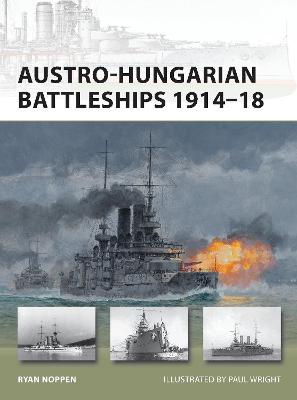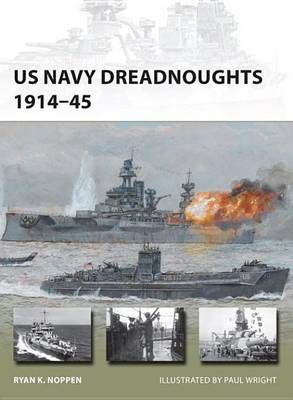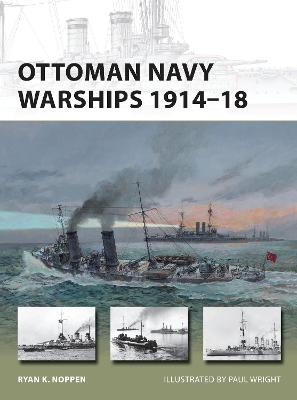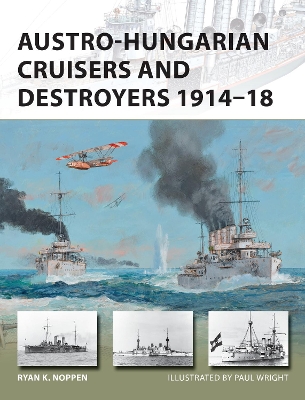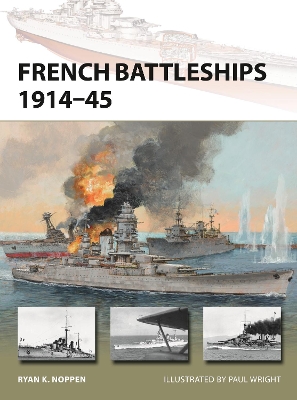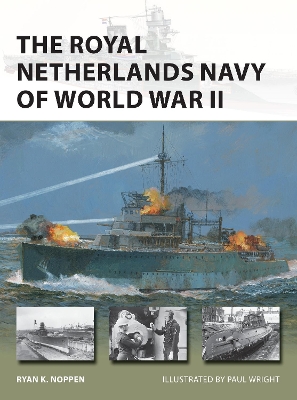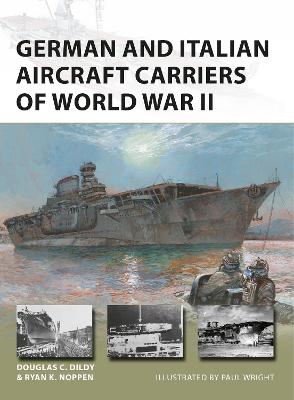New Vanguard
5 primary works • 8 total works
Book 193
Book 208
Book 227
Book 241
Using specially-commissioned artwork author Ryan Noppen examines the cruisers and destroyers that the Austro-Hungarian Empire had at their disposal during World War I. His study covers their design and development, with thrilling combat reports highlighting the way in which the strategies evolved throughout the Adriatic Campaign.
Book 266
After the fall of France in 1940, the dreadnoughts and fast battleships of the Marine Nationale had the unique experience of firing against German, Italian, British, and American targets during the war.
This authoritative study examines these fascinating ships, using detailed colour plates and historical photographs, taking them from their inception before World War I, through their service in World War II including the scuttling of the French fleet at Toulon in 1943, and the service of Richelieu in the war against Japan.
Beginning in December 1941, the Dutch Navy played a very active role in the defence of the East Indies against the Japanese during World War II. The Battle of the Java Sea at the end of February 1942 crushed Dutch naval power in the East Indies, sinking the cruisers Java and De Ruyter and killing Admiral Karel Doorman. However, several Dutch surface warships and submarines continued the fight against the Axis powers alongside the Allies until the end of World War II, including a pair of British-built destroyers, Van Galen and Tjerk Hiddes. This beautifully illustrated book from a leading scholar on Dutch military history provides a comprehensive guide to the Royal Netherlands Navy of the World War II period, complete with detailed cutaways and battleplates of the fleet in action.
German and Italian Aircraft Carriers of World War II
by Ryan K. Noppen and Douglas C. Dildy
The quest for a modern aircraft carrier was the ultimate symbol of the Axis powers’ challenge to Allied naval might, but fully-fledged carriers proved either too difficult, expensive or politically unpopular for either to make operational. After the Anglo-German Naval Agreement of 1935, Hitler publicly stated his intention to build an aircraft carrier, the Graf Zeppelin, which was launched in 1938. A year later, the ambitious fleet-expansion Z-Plan, was unveiled with two additional aircraft carriers earmarked for production . However, by the beginning of World War II, Graf Zeppelin was not yet completed and work was halted. Further aircraft carrier designs and conversion projects such as the ocean liner Europa and heavy cruiser Seydlitz were considered but, in January 1943, all construction work on surface vessels ceased and naval resources were diverted to the U-boat Campaign.
This book explains not only the history of Germany’s famous Graf Zeppelin fleet carrier and German carrier conversion projects but also Italy’s belated attempt to convert two of her ocean liners into carriers. It considers the role of naval aviation in the two countries’ rearmament programmes and describes how ultimately it was only Italian seaplane carriers and German ocean-going, catapult-equipped flying boat carriers that both Axis powers did eventually send into combat.
